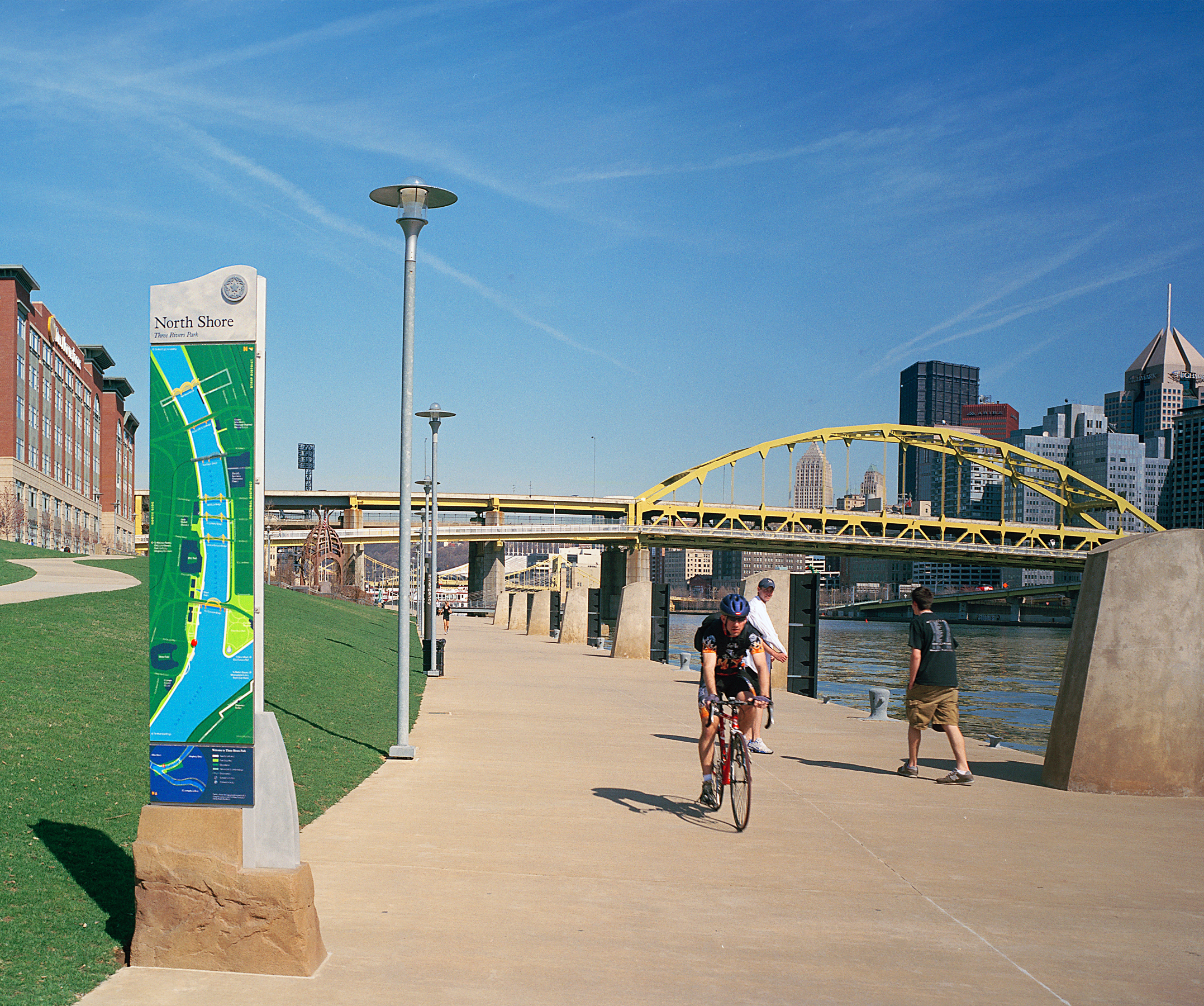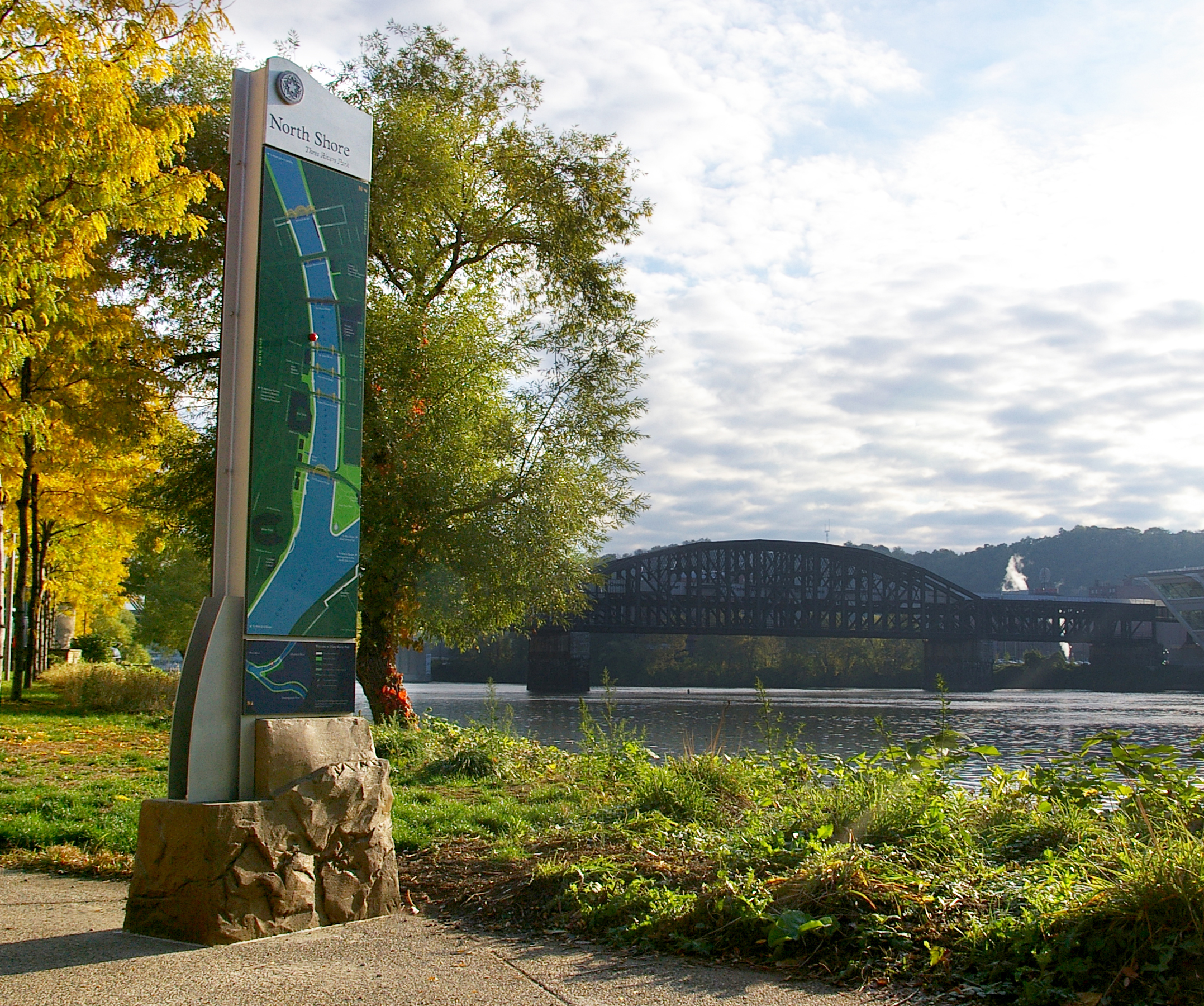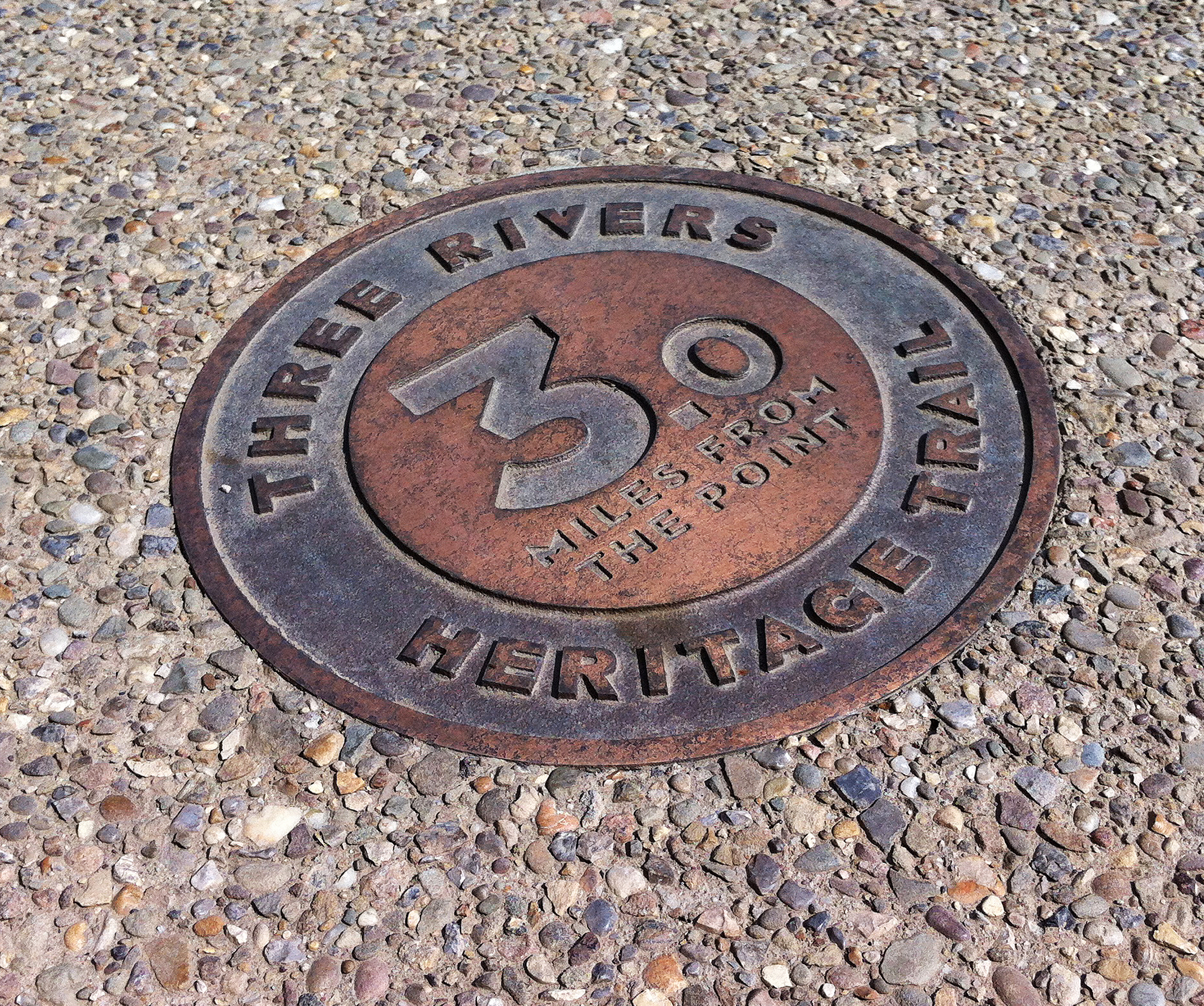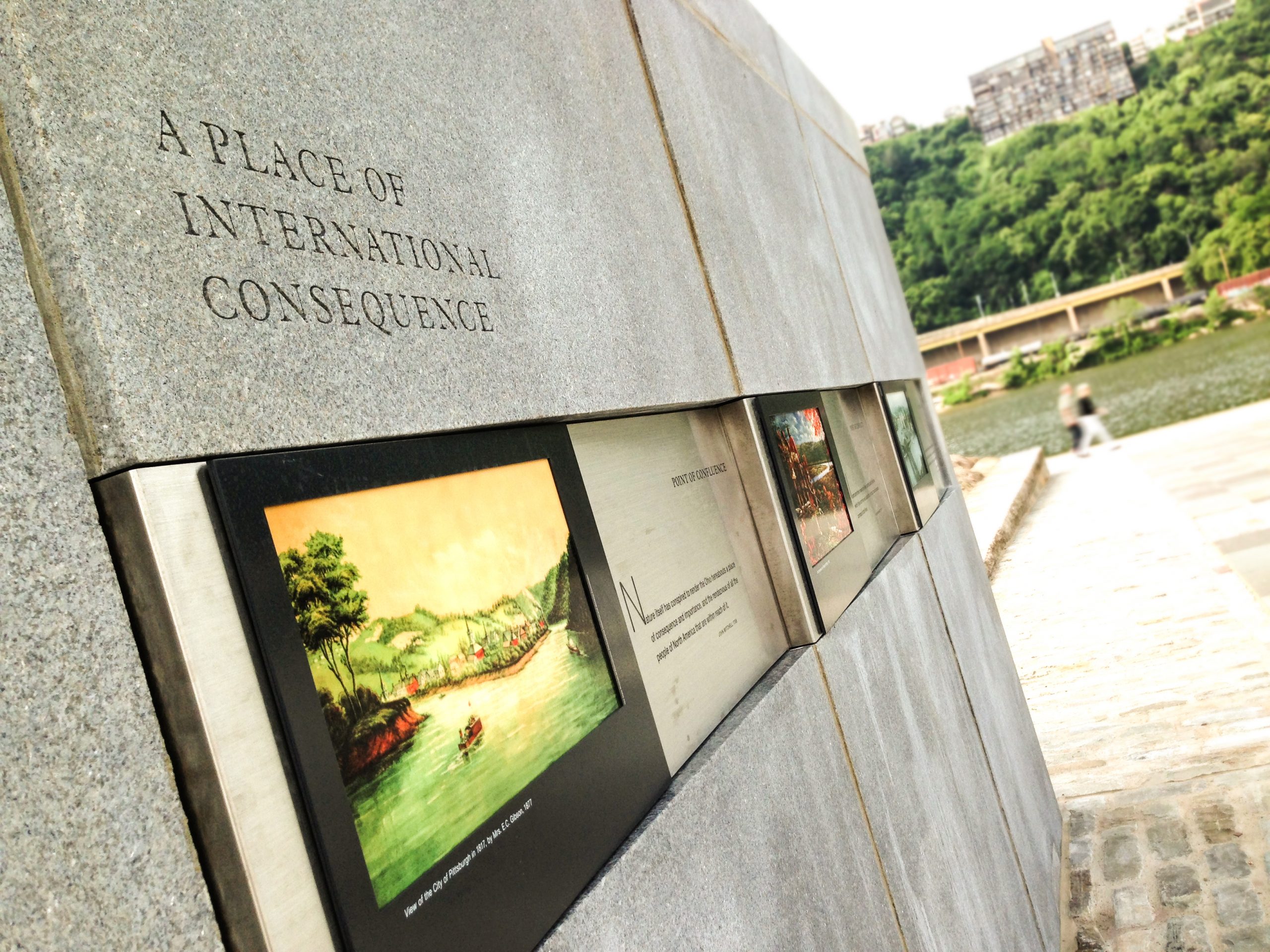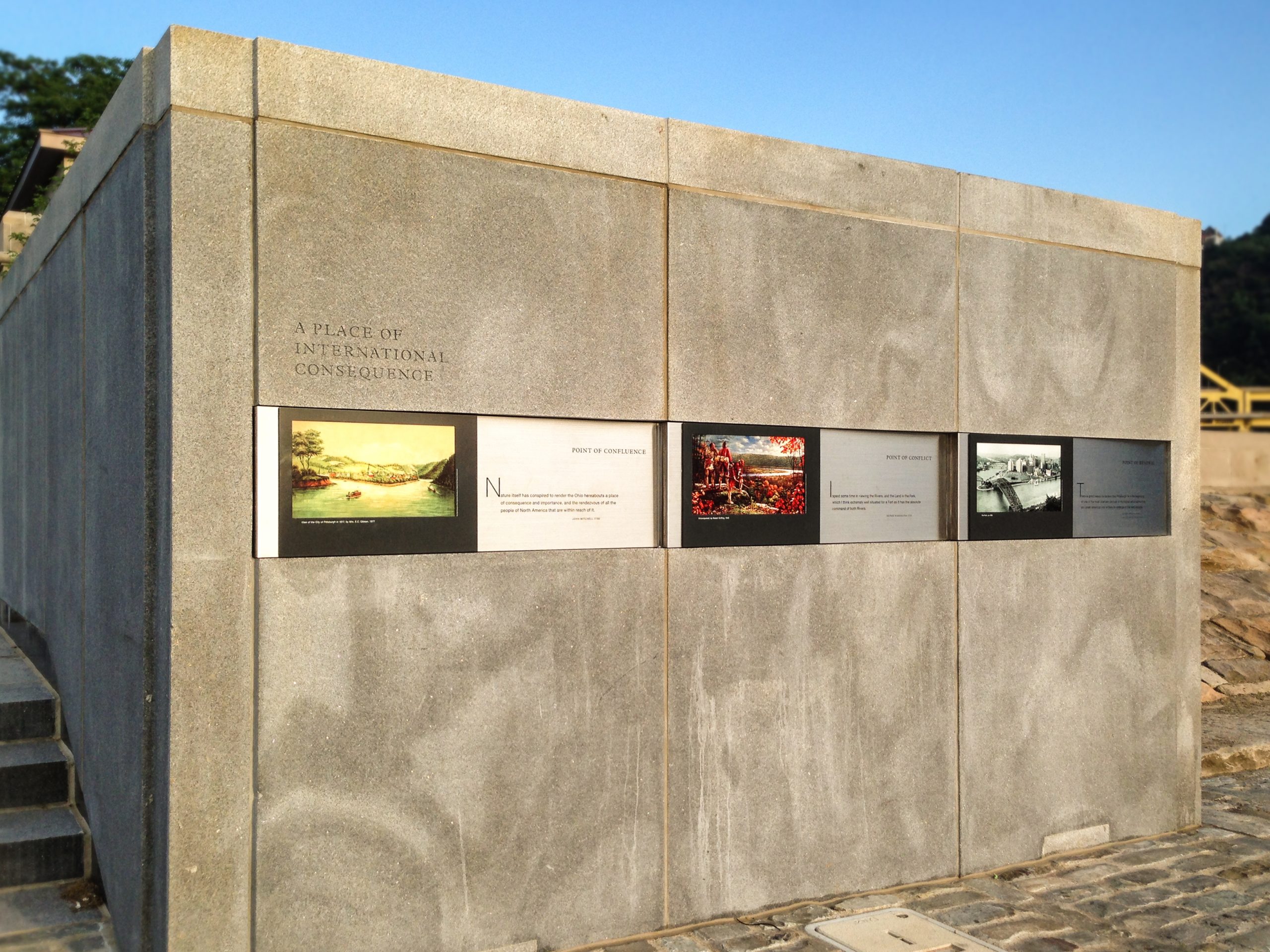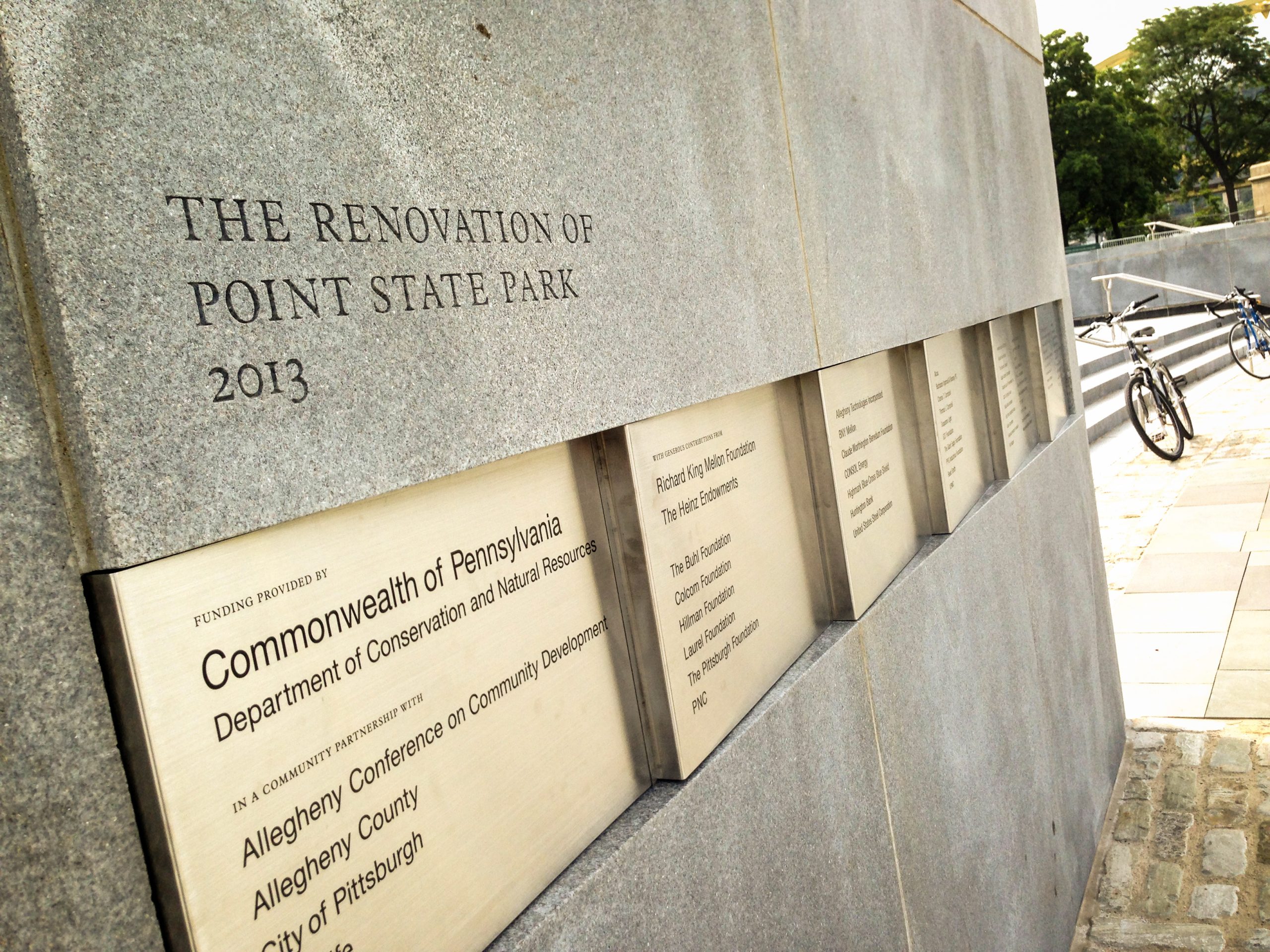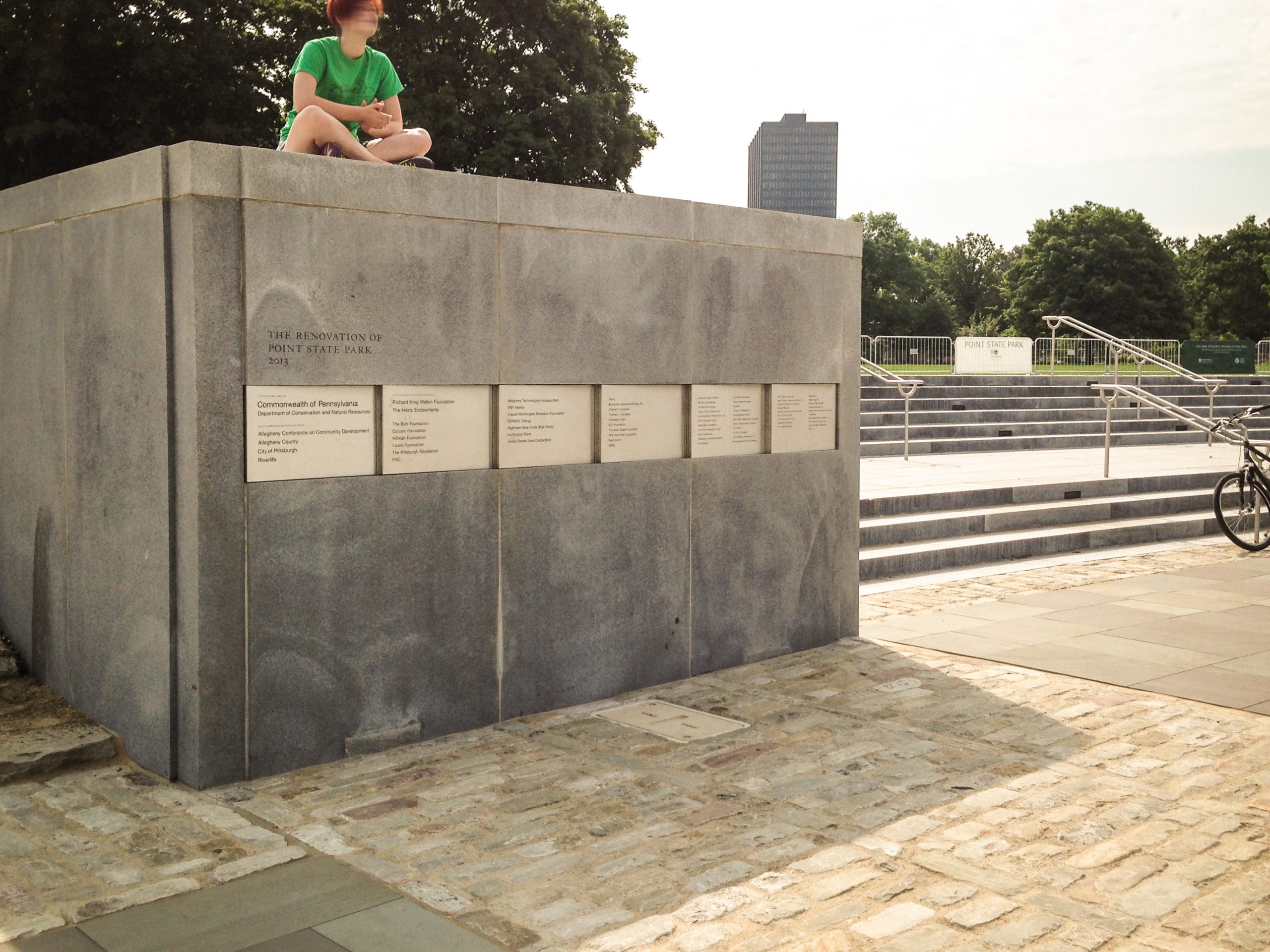Revitalizing the riverfront.

Three Rivers Park, Pittsburgh’s grand riverfront park system, grew from a civic vision to transform waterfronts long relegated to industry and transportation into recreational, cultural, and economic assets for all.
Pittsburgh’s 250th anniversary celebration in 2007 triggered a wave of new development, including the $35 million renovation of Point State Park. Project partners including Riverlife, PA DCNR, the Allegheny Trail Alliance, Friends of the Riverfront, and Western Pennsylvania Conservancy, invested in significant projects. The multiple entities and projects created a communications challenge and the need for a graphic identity system that would unify the nascent Three Rivers Park.
Identity Design
Working with input from the multiplicity of stakeholders, a unifying graphic identity brands all projects as Three Rivers Park, and supports the original goal of a single riverfront park system as regional source of enjoyment and pride, economic generator for adjoining neighborhoods, and catalyst for development and funding.
The central element of the icon alludes to the shape of Fort Pitt, the 18th-century British outpost at the confluence of the rivers that gave Pittsburgh its name. Added graphic elements illustrate the area’s natural history. The symbol identifies trails, parks, boat landings, art installations, and signage as a singular entity.

Wayfinding
A system of wayfinding signs placed along the Three Rivers Heritage Trail uses Pittsburgh’s ubiquitous bridges to orient park visitors. Marking nearby attractions and amenities encourages exploration of cultural and business districts, a fundamental goal of the riverfront development.
Sign structures suggest Pittsburgh’s industrial heritage and natural resources. Embedded bronze mile markers show distance to The Point, the park’s central site.
Medallion
The massive bronze medallion at Point State Park celebrates both the western terminus of the 150-mile Great Allegheny Passage Trail and Pittsburgh’s famous Point. [The trail ends (or begins) here, between the iconic 100-foot-tall Point Fountain and the confluence of the three rivers.] The medallion and its granite surrounds create a highly visible signal that this is a place of great significance.

Medallion iconography celebrates the historical importance of The Point: the 18th century collision of Native American, French, and British cultures at the confluence of the three rivers made this the pivotal strategic site in determining the future of this New World. [Fort Pitt (the British presence), Fort Duquesne (the French presence), and a turtle (the Native American presence) appear in the medallion.] Confluence, Conflict, and Renewal are the foundational themes underpinning Point State Park’s messaging.
A sister medallion will mark the eastern terminus of the Great Allegheny Passage Trail in Cumberland, Maryland.
Pylon
A Three Rivers Park-branded entrance pylon connects Point State Park, a national landmark, to the park system. Pylon form and materials nod to the modernism of the original 1950’s park architecture and provide wayfinding cues without obstructing views. Removable panels allow for efficient updating as park policies evolve. Thoughtful language provides a warm welcome and advocates for a sense of amiable reverence.
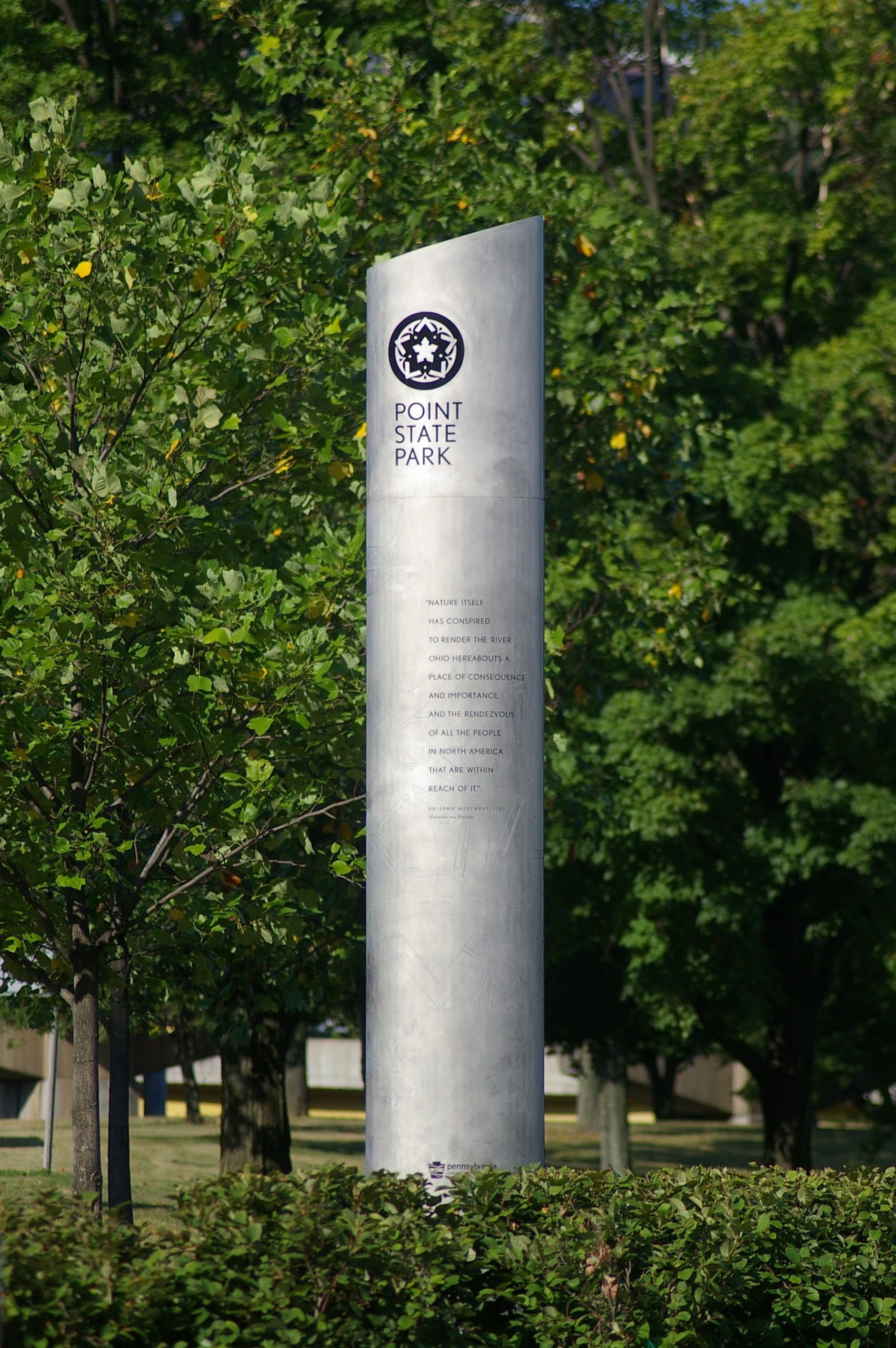
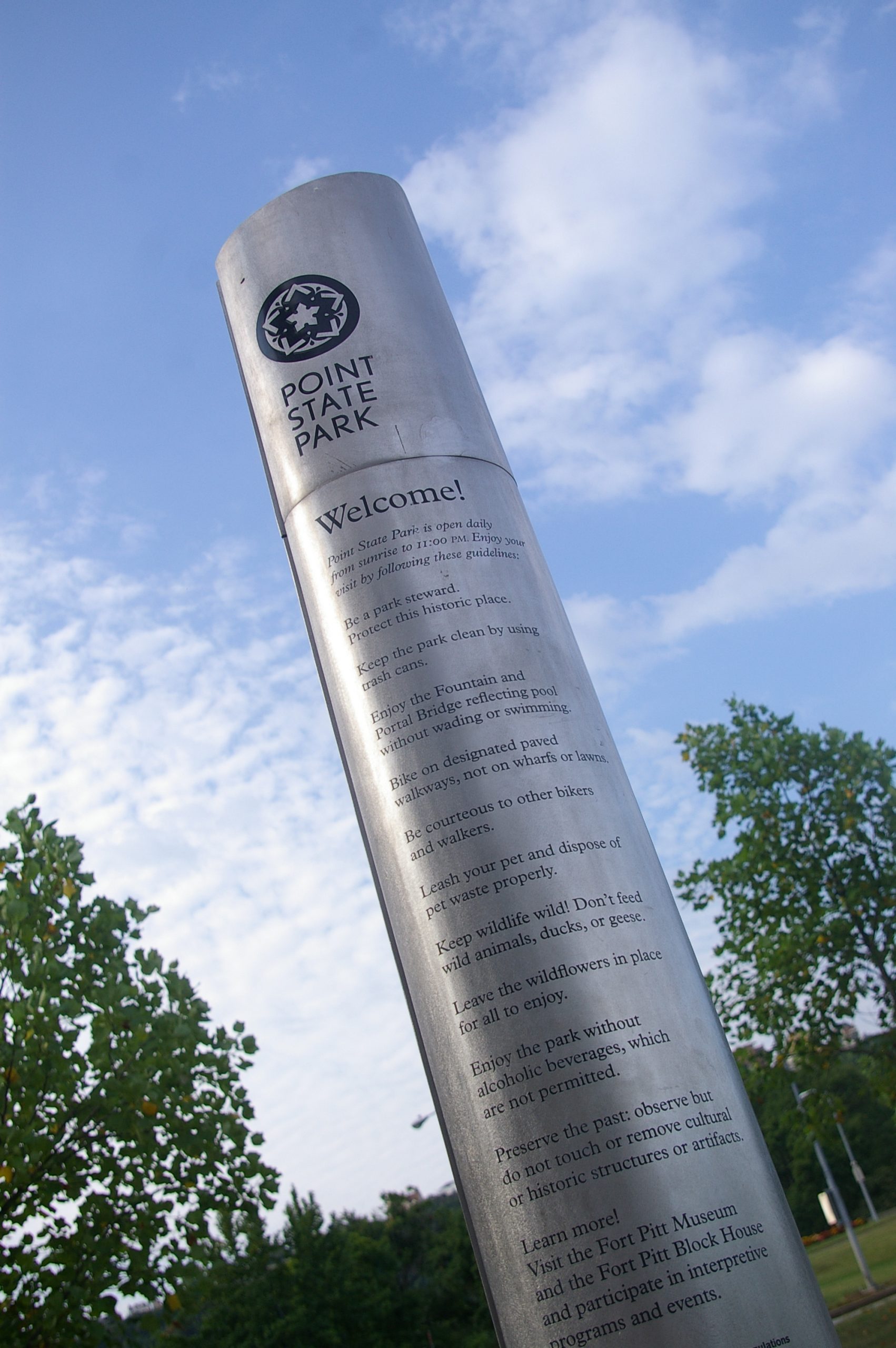
Donor Acknowledgement
Interpretive panels on fountain structures trace the Point’s relevance throughout its settlement history. Mirroring those with donor acknowledgement signs appropriately recognizes the monumental task of preserving this historic site.
